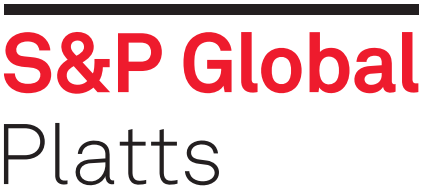The European Union’s steel sector performance in the first quarter of 2022 confirms a marked slowdown from the positive trend observed in 2021, reinforcing bleaker prospects for the rest of the year, European Steel Association Eurofer said Aug. 24.
Regional apparent steel consumption is expected to fall for the third time in four years, this time by 1.7%, while steel demand prospects remain highly uncertain, fuelled by the ongoing energy crisis, inflation, supply chain disruptions and Russia’s war in Ukraine. Import penetration has remained considerably high, the Brussels-based association said in a market outlook report.
Apparent steel consumption is set to recover in 2023 (up 5.6%), but demand overall remains subject to high levels of uncertainty among steel-using sectors. This uncertainty is set to last at least until the first quarter of 2023, conditional upon developments in the Russia-Ukraine war – which are unforeseeable at the time of writing – and its impact on global supply chains, Eurofer said.
“A gloomier outlook for the steel market for the rest of 2022 is consolidating and will most likely have spill-over effects also on 2023,” said Axel Eggert, Eurofer director general. “We have been facing skyrocketing energy prices and bottlenecks in supply chains for almost a year now, and the dire consequences of Russia’s invasion of Ukraine for half a year. Yet, there is no sign that uncertainty will ease any time soon, while steel imports in the EU are still significant: this is detrimental for a healthy EU steel industry.”
Despite a substantial 15.2% on-year growth in apparent steel consumption in 2021, followed by milder 6.5% growth in Q1 2022, to a total of 37.1 million mt in the quarter, this volume is still below the prepandemic peak of 2018, Eurofer said. A declining trend is expected for the rest of 2022, resulting in a moderate recession and in a further halving of output growth in steel-using sectors, where production is expected to grow just 1.1% this year, it said.
Market participants told S&P Global Commodity Insights Aug. 24 that they saw production cuts as necessary to stabilize the bear market, with spiraling discounts doing little to stimulate trading. Platts assessed hot-rolled coil in Northern Europe down Eur10/mt Aug. 24 at Eur700/mt ($697.40/mt) ex-works Ruhr. Platts is part of S&P Global Commodity Insights.
The price peaked at Eur1,460/mt March 18, shortly after Russia’s Feb. 24 invasion of Ukraine sparked fears of market tightness.
Market overview
Growth in domestic deliveries was nearly flat on year in Q1 (up 0.2%, after a 1.2% rise in Q4 2021), mirroring the sluggish demand seen since the second half of 2021, according to the association’s report. By contrast, 2021 deliveries had rebounded sharply, rising 11.3% over levels in 2020, which saw a COVID-19-related slump of 9.6% from 2019.
Imports into the EU continued to increase significantly in Q1, rising 28.8% on year, although this was a slower pace than in the fourth and third quarter of 2021 (up 43.4% and u[ 47.7% on year, respectively). Despite a limited rise (up 0.4%) in the second quarter, import penetration over recent quarters has remained significantly high, the association maintained.
EU steel-using sectors
A more nuanced picture emerges for steel-using sectors in Q1, Eurofer said. The overall output figure is markedly positive (up 4.9% on year), which was higher than the previous quarter’s performance (up 2.6% on year), scoring the fifth consecutive year-on-year growth.
However, a closer look at individual sectors shows an uneven reality, it said.
“The favorable conditions experienced by construction, mechanical engineering and transport were able to offset the negative results of automotive and domestic appliances, which were hit first by the current global challenges,” the report said.
“However, the unfavorable conditions stemming from Russia’s ongoing war in Ukraine, with worsening supply chain issues, energy crisis and high production costs, are expected to negatively impact in the next quarters also on those sectors which were spared so far.”
For this reason, the steel-using sectors’ output for 2022 has been revised downward by half compared to Eurofer’s previous forecasts, and is now seen rising 1.1% on year versus the previous growth projection of 2%, it said.
— Diana Kinch





